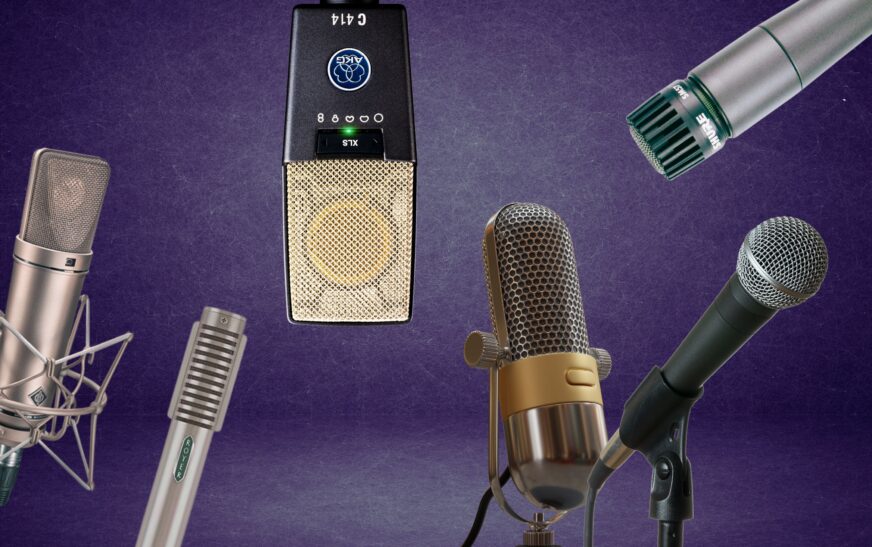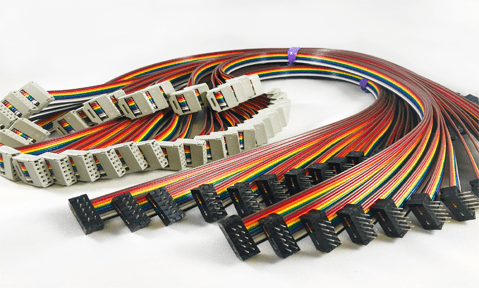Microphones serve as the often-overlooked champions of contemporary communication and audio reproduction. In various contexts—be it a virtual conference, podcast recording, live performance, or film production—microphones are essential for accurately capturing sound with both precision and clarity. The evolution of microphones has transformed them from basic mechanical instruments into advanced devices that can detect a broad spectrum of frequencies and adjust to different acoustic settings.
This article explores the historical development, technological advancements, types, applications, benefits, and future directions of microphones, providing an in-depth understanding of their significant influence on the realms of sound and communication.
1. The History of Microphones
.jpg?sfvrsn=49d0d07f_1)
1. The Early Innovations
The origins of microphone technology can be traced to the late 19th century, when the first operational microphone was developed to enhance human voice transmission for telecommunication. Emile Berliner is frequently recognized for creating the first modern microphone in 1876, which played a vital role in the advancement of Alexander Graham Bell’s telephone. Bell’s design utilized a liquid transmitter, employing water to convert sound vibrations into electrical signals. Although basic, this invention laid the groundwork for subsequent innovations.
2. Carbon Microphones
The carbon microphone, developed by Thomas Edison in 1877, emerged as one of the earliest commercially successful microphones, finding extensive application in telephony and radio broadcasting. This microphone operated by utilizing carbon granules to alter the electrical resistance in response to sound vibrations, significantly enhancing its sensitivity and effectiveness in audio capture compared to earlier models.
3. The Shift to Contemporary Microphones
The 20th century witnessed a transformation in audio technology with the advent of dynamic and condenser microphones, which offered superior fidelity and adaptability. These types of microphones became the benchmark in broadcasting, music production, and public speaking. By the 1960s and 1970s, advancements in microphone technology had led to more robust designs and enhanced sound quality, paving the way for modern audio recording techniques.
2. How Microphones Work: Understanding the Technology

A microphone fundamentally serves as a transducer that transforms sound waves into electrical signals. Various microphone technologies accomplish this task through distinct methods, yet they all adhere to the same fundamental principle.
a. Microphone Components
Diaphragm: The diaphragm is the essential element that reacts to sound waves. It vibrates in response to sound pressure, and this movement produces electrical signals.
Transducer Element: The transducer is tasked with converting the mechanical energy generated by the diaphragm’s movement into an electrical signal.
Amplifier: Certain microphones are equipped with an integrated amplifier that enhances the electrical signal prior to its transmission to external recording or broadcasting devices.
b. Microphone Technology Types
i. Dynamic Microphones
Dynamic microphones operate based on the principle of electromagnetic induction. They feature a diaphragm connected to a coil of wire situated near a magnet. When sound waves impact the diaphragm, it causes the coil to move, generating an electrical current within the magnetic field. These microphones are recognized for their robustness, dependability, and capacity to manage high sound pressure levels, making them suitable for live performances and broadcasting.
ii. Condenser Microphones
Condenser microphones utilize a capacitor to convert acoustic energy into electrical energy. A lightweight, flexible diaphragm is positioned adjacent to a solid metal plate. When sound waves strike the diaphragm, the distance between the two plates alters, resulting in an electrical signal. These microphones are exceptionally sensitive and deliver a detailed, high-fidelity sound, rendering them favored for studio recordings and situations where sound precision is paramount.
iii. Ribbon Microphones
Ribbon microphones consist of a slender metal ribbon suspended within a magnetic field. When sound waves reach the ribbon, it vibrates, producing a signal. These microphones are esteemed for their warm, vintage sound and are frequently employed for recording vocals, acoustic instruments, and radio broadcasts.
iv. USB Microphones
With the advent of digital media and the proliferation of home studio setups, USB microphones have gained popularity.
3. Types of Microphones: Adapting to Various Needs

Microphones are available in various shapes, sizes, and configurations, each tailored for specific applications. Below is an overview of the primary categories:
a. Handheld Microphones
Handheld microphones are frequently utilized in live performances, interviews, and public speaking engagements. Their design facilitates easy transport, and they are generally dynamic microphones, known for their durability and capacity to manage high sound levels.
b. Lavalier Microphones
Lavalier microphones, often referred to as lapel microphones, are compact, clip-on devices widely used in television, theater, and public speaking. Their discreet nature allows for hands-free operation, making them ideal for presenters or actors who require mobility without compromising sound quality.
c. Shotgun Microphones
Shotgun microphones are characterized by their highly directional capabilities, designed to capture sound from a specific source while reducing background noise. They are commonly employed in film and television production to record dialogue or ambient sounds from a distance.
d. Boundary Microphones
Boundary microphones, also known as PZM (Pressure Zone Microphones), are designed to be mounted on flat surfaces, capturing sound by detecting pressure waves from that surface. They are particularly effective in large rooms or group settings, often used in conference rooms and theaters.
e. Wireless Microphones
Wireless microphones transmit audio signals to a receiver using radio frequencies or Bluetooth technology, thereby eliminating the need for cables. This feature offers enhanced flexibility and mobility for performers, presenters, and journalists.
4. Applications of Microphones: Where They Matter Most

Microphones play a crucial role in a variety of sectors and industries. Some of the most notable applications include:
a. Music and Recording
In the realm of music, microphones serve as vital instruments for capturing both vocals and instrumental sounds. In studio settings, condenser microphones are favored for their precision and sensitivity, whereas dynamic microphones are typically utilized for live performances due to their robustness and ability to minimize feedback.
b. Broadcasting and Journalism
Microphones designed for broadcasting are tailored for use in radio, television, and online media production. These devices must provide clear and reliable sound quality, often in challenging environments. Lavalier and handheld microphones are particularly prevalent in broadcasting because of their convenience and portability.
c. Film and Television
Within the film and television sectors, shotgun microphones are employed to record dialogue on set, with boom operators strategically positioning these microphones to achieve superior audio quality while remaining out of the camera’s view. Additionally, microphones are essential in post-production, where audio is enhanced and edited for clarity and impact.
d. Communication and Virtual Meetings
As remote work and digital communication platforms have become more prevalent, microphones have become vital for virtual meetings, online learning, and teleconferencing. USB and integrated computer microphones facilitate communication over long distances with minimal setup requirements.
e. Public Speaking and Events
Microphones are essential for public speaking engagements, conferences, and events where speakers must address large crowds. Wireless microphones enable presenters to move freely while ensuring high-quality audio delivery.
5. Advantages of Microphones

1. Amplification and Sound Clarity
Microphones serve to enhance sound, allowing speakers and performers to be heard distinctly over considerable distances or within expansive venues. This amplification is crucial for facilitating effective communication in public environments.
2. Recording Capabilities
Microphones facilitate the recording of high-quality audio for various mediums, including music, podcasts, film, and broadcasting. They enable the precise capture of sound, ensuring that details and subtleties are retained that might otherwise be overlooked.
3. Enhanced Communication
In today’s digital landscape, microphones have transformed global communication into a seamless experience. They are vital instruments in video conferencing, telecommunication, and virtual meetings, enabling individuals to connect, collaborate, and communicate effectively from any location worldwide.
6. Challenges and Limitations
1. Sensitivity to Noise
Microphones are engineered to capture audio; however, they may also detect undesirable background noise, particularly in environments with high levels of sound. It is crucial to manage both the sensitivity and positioning of microphones to prevent the recording of irrelevant sounds.
2. Feedback Issues
Microphone feedback manifests as a loud and jarring screech, occurring when the microphone captures sound from its own output, resulting in a feedback loop. This phenomenon is especially prevalent in live sound settings, but it can be reduced through appropriate setup and equipment selection.
3. Equipment Cost
The price of high-quality microphones can be significant, especially for professional-grade models utilized in studios or during live performances. Nevertheless, advancements in technology are leading to the emergence of more budget-friendly alternatives for both consumers and hobbyists.
7. Future Trends in Microphone Technology
As technology progresses, microphones are adapting to address emerging challenges and requirements.
1. Intelligent Microphones
The incorporation of artificial intelligence (AI) is anticipated to transform microphone technology significantly. Intelligent microphones may autonomously modify their sensitivity, equalization, and directionality in response to the surrounding environment and the nature of the sound being captured, thereby enhancing both recording and live performance experiences.
2. Enhanced Noise Cancellation
Future microphone designs are expected to feature more advanced noise-cancellation technologies. By utilizing multiple microphones alongside AI-driven algorithms, these upcoming models could more effectively eliminate unwanted background noise compared to existing versions, making them particularly suitable for use in noisy settings.
3. Miniaturization and Wearable Technology
With the ongoing expansion of wearable technology, microphones are becoming increasingly compact and seamlessly integrated into everyday devices. This trend will facilitate more discreet audio recording and hands-free communication in devices such as smart glasses, fitness trackers, and hearing aids.
Conclusion
The evolution of microphones since their inception in the 19th century has been significant, transforming them into advanced instruments capable of capturing and reproducing sound with exceptional clarity. In various fields such as music, broadcasting, communication, and entertainment, microphones have a profound impact on our auditory experiences and interpersonal connections. With ongoing technological advancements, the importance of microphones is poised to increase even further.






